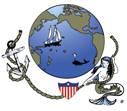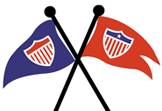Aus Pale Ale #2
We recently arrived in the Seychelles, after a rather
boisterous crossing from the delightful Chagos Archipelago. My last
batch of Real Ale was made in the Maldives with
water that was really too salty (the watermaker wasn't working correctly, and I
only found out after I'd made the batch). More to the point, I'd used
Coopers Brew Enhancer #2, a dextrose, malt, and maltodextrin mix. Coopers
Real Ale calls for Brew Enhancer #1, which doesn't include the extra malt.
BE2, with it's extra malt, made the Real Ale too malty for our taste.
Unfortunately, I don't have any BE1 any more, just BE2. So the obvious
thing to do is brew a batch of something that wants BE2.
I have 2 brew-kits on board that call for Brew Enhancer #2: Australian Pale
Ale, and Mexican Cerveza. While I'd love to try a completely new brew like
the Cerveza, I also want a brew that I know works well, and we've really enjoyed
the Australian Pale Ale in the past, so that's what I went with.
Friday, 13 July 2007 - Preparation:
The Seychelles Yacht Club is rather run down (they're about to be evicted, so
nobody is doing any maintenance) but it does have 2 big sinks and plenty of
water. Since our watermaker is still producing only wash-quality water, I
decided to take everything ashore and hold my brew-ha-ha there in the cool
breezway.
Washing everything went quickly (it's so nice to have access to unlimited
fresh water) and during the sterilization phase I went to the main yacht-club
dining area to talk to friends for a few minutes. Rinsed everything
thoroughly and then it was time to get down to brass tacks.
Friday, 13 July 2007 - Coopers Australian Pale Ale:
While Coopers Brew Enhancer #2 was all I had left, all my bags of it had gone
rock-hard since I bought them (over a year ago in Darwin) but I've found that it
still dissolves readily in water. So I put the brick of BE#2 in the
carboy, added several liters of tap-water, and stirred for a few minutes until
the sugar had dissolved. Then I added the Coopers Australian Pale Ale mix,
spooned out as much of the gloop as I could, and used some hot water generously
provided by the kitchen staff to get the last of it out. Brought the total
volume up to 23 liters, put the top on, and carried everything back to Ocelot
where I added the yeast and put in the water-trap.
Saturday, 14 July 2007 - Fermenting:
Not only is this Bastille Day (French independence) but this is also Sue's
birthday (the French always do such a good job of celebrating Sue's birthday).
This, as well as the fact that I'm in the middle of several boat projects, meant
that I didn't really document this brew as well as I should have, forgetting to
note things like specific gravity or even how the fermentation stage progressed.
As I recall, it was a bit slow to get going but then progressed happily.
The weather was cool enough that I didn't need to resort to any form of active
cooling of the wort. I just put it in the coolest corner of the cockpit
available, keeping it out of direct sunlight as much as possible.
Thursday, 19 July 2007 - Bottling:
My main divergence from previous batches was that I decided not
to use dextrose as my priming sugar. Not only am I running out of dextrose
but it's not priming the bottles enough anyway. My carbonation has always
been a bit low, with small heads and the beer quickly losing its fizz if left in
the fridge for a few days. So this time I decided to use regular table
sugar to prime the bottles. Even Coopers "Priming Drops" are just sucrose.
Sucrose is a bit "stronger" than dextrose so I decided not to overdose the
priming, as I have for almost all previous batches. Instead Amanda just
put in the nominally correct amount for the 1.5 liter bottles we used.
Again I found that my automatic fill-valve was unnecessary. Instead, I
just controlled the flow into the bottles using the tap on the carboy.
This also allowed me to fill the bottles higher, as I could keep the flow going
(slowly) as I lowered the bottle to remove the fill tube. I could fill the
bottles almost right to the top, leaving essentially no air gap. I'm
hoping this will force more of the CO2 into the beer itself.
Since I forgot to take any specific gravity readings, I don't know what the
alcoholic content is.
Tuesday, 28 August 2007 - Sampling:
Today would have been my brew-master brother's 51st birthday if he hadn't
succumbed to an aggressive cancer earlier this year. This seems like an
auspicious occasion to try out this new batch - in his honor, as it were.
And indeed, it's a fine brew, even though it's still "green" (it has only aged
for 9 days, much less than the recommended 2+ weeks).
The first thing we noticed was that the bottles were really rock-hard, as
pressurized as any soda bottles bought in the store. Even chilling the beer down
didn't significantly decrease the pressure, as usually happens with my other
brews. Opening the bottle produced a flow that had to be poured out
quickly, lest the bottle overflow. It has a better head than any beer I've
ever produced, so priming with table sugar seems to be the answer.
The taste is as delicious as I'd remembered from my previous batch of Pale
Ale, rich, flavorful, and refreshing. Over the next few days we found that
opened (but capped) bottles left in the fridge still had good carbonation!
This is a major plus for us, as we tend to only drink a glass or 2 with lunch,
or perhaps at the end of the day, so opened bottles need to be able to survive
in the fridge.
The only real "problem" with this Australian Pale Ale is that it's much
better than our nominally "active" batch of Real Ale,
which has too much malt for our taste. <sigh> I guess we'll just
have to brew up another batch, using a different adjunct sugars but priming with
standard table sugar.
Brewing Pages:
Up | Brewing Procedure | Real Ale #3 | Aus Pale Ale #2 | Real Ale #2 | Bavarian Lager | Coopers Bitter #2 | Coopers Draught #2 | Australian Pale-Ale | Coopers Bitter | Coopers Draught | Coopers Real Ale
Jon's Pages:
Pre-History Stories | Contact Us | Brewing Beer | FrontPage 101 | FrontPage FAQs | Radio Email | Resume | Web Archives
Top Level:
Home |
Destinations |
Cruising Info |
Underwater |
Boat Guests |
Ocelot |
Sue |
Jon |
Amanda |
Chris |
Site Map |
Make a Comment
 |
Lifetime
Commodores
of the
Seven Seas
Cruising
Association |
 |
|
If our information is useful,
you can help by making a donation
|
Copyright © 2000‑ Contact:
Jon and Sue Hacking -- HackingFamily.com, svOcelot.com.
All rights reserved.

